实验5:开源控制器实践——POX
实验5:开源控制器实践——POX
一、实验目的
- 能够理解 POX 控制器的工作原理;
- 通过验证POX的forwarding.hub和forwarding.l2_learning模块,初步掌握POX控制器的使用方法;
- 能够运用 POX控制器编写自定义网络应用程序,进一步熟悉POX控制器流表下发的方法。
二、实验环境
Ubuntu 20.04 Desktop amd64
三、实验要求
(一)基本要求
- 搭建下图所示SDN拓扑,协议使用Open Flow 1.0,控制器使用部署于本地的POX(默认监听6633端口)

- 阅读Hub模块代码,使用 tcpdump 验证Hub模块;
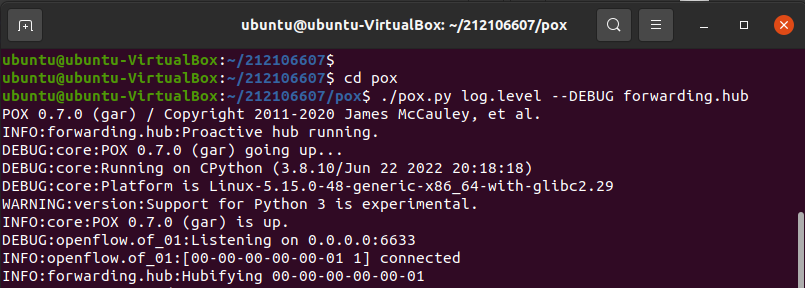

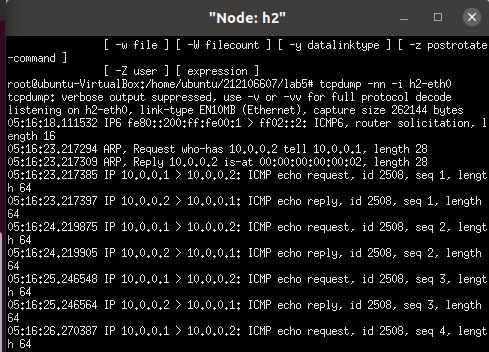

- 阅读L2_learning模块代码,画出程序流程图,使用 tcpdump 验证Switch模块
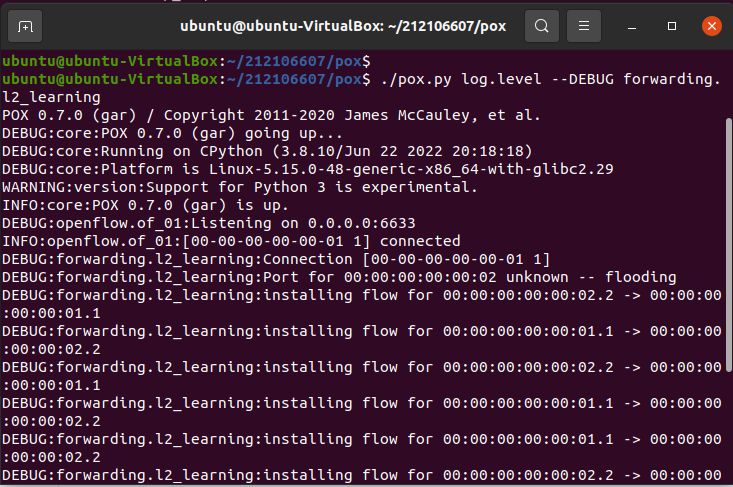
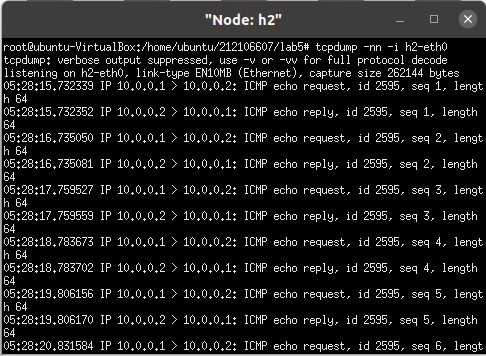
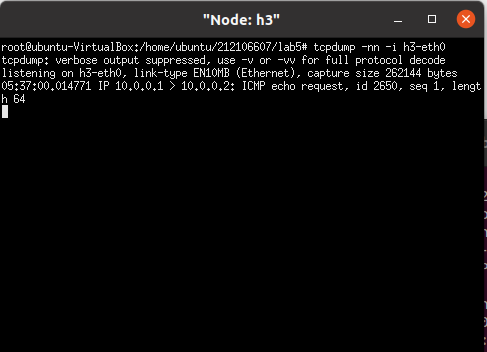
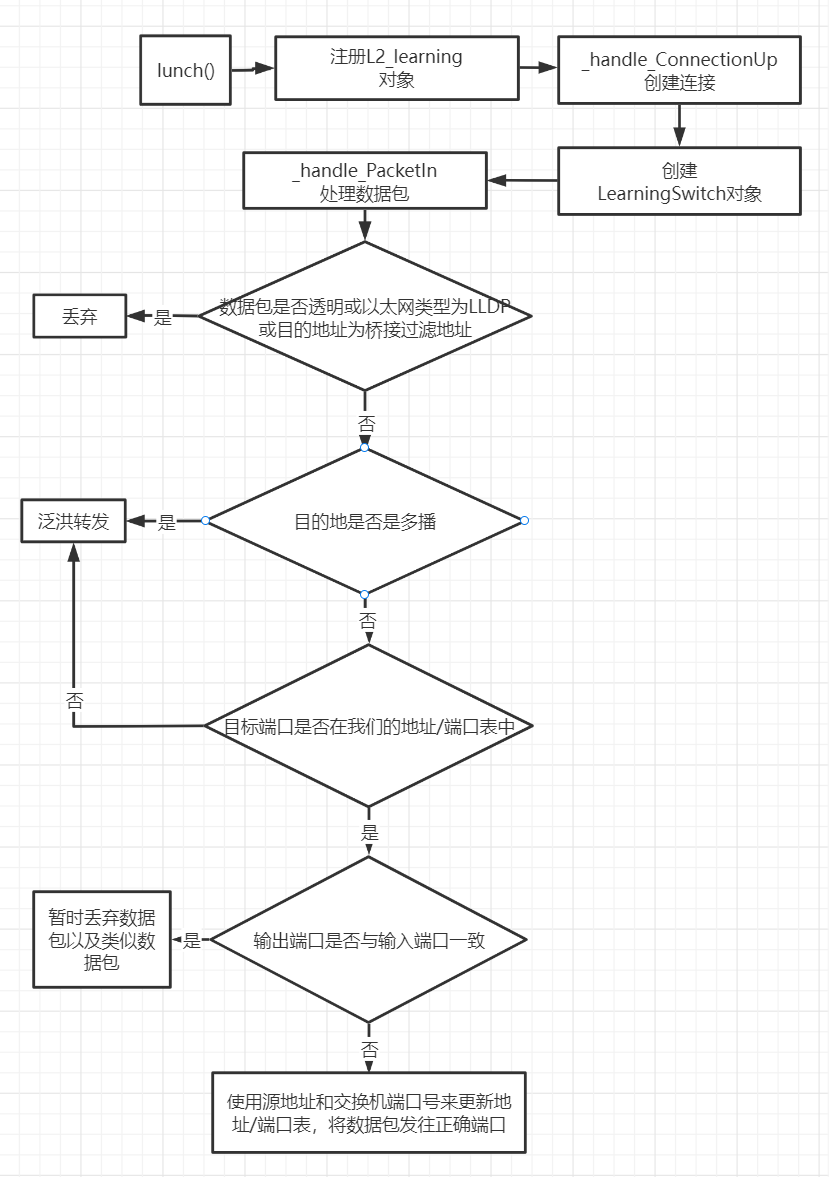
(二)进阶要求
- 重新搭建(一)的拓扑,此时交换机内无流表规则,拓扑内主机互不相通;编写Python程序自定义一个POX模块SendFlowInSingle3,并且将拓扑连接至SendFlowInSingle3(默认端口6633),实现向s1发送流表规则使得所有主机两两互通。


from pox.core import core import pox.openflow.libopenflow_01 as of class SendFlowInSingle3(object): def __init__(self): core.openflow.addListeners(self) def _handle_ConnectionUp(self, event): msg = of.ofp_flow_mod() # 使用ofp_flow_mod()方法向交换机下发流表 msg.priority = 1 msg.match.in_port = 1 # 使数据包进入端口1 msg.actions.append(of.ofp_action_output(port=2)) # 从端口2转发出去 msg.actions.append(of.ofp_action_output(port=3)) # 从端口3转发出去 event.connection.send(msg) msg = of.ofp_flow_mod() # 使用ofp_flow_mod()方法向交换机下发流表 msg.priority = 1 msg.match.in_port = 2 # 使数据包进入端口2 msg.actions.append(of.ofp_action_output(port=1)) # 从端口1转发出去 msg.actions.append(of.ofp_action_output(port=3)) # 从端口3转发出去 event.connection.send(msg) msg = of.ofp_flow_mod() # 使用ofp_flow_mod()方法向交换机下发流表 msg.priority = 1 msg.match.in_port = 3 # 使数据包进入端口3 msg.actions.append(of.ofp_action_output(port=1)) # 从端口1转发出去 msg.actions.append(of.ofp_action_output(port=2)) # 从端口2转发出去 event.connection.send(msg) def launch(): core.registerNew(SendFlowInSingle3) - 基于进阶1的代码,完成ODL实验的硬超时功能。
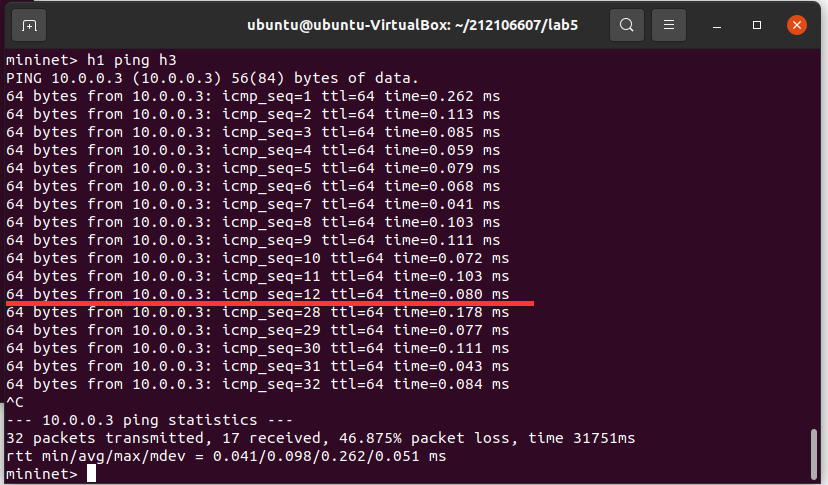

from pox.core import core import pox.openflow.libopenflow_01 as of class SendFlowInSingle3(object): def __init__(self): core.openflow.addListeners(self) def _handle_ConnectionUp(self, event): msg = of.ofp_flow_mod() # 使用ofp_flow_mod()方法向交换机下发流表 msg.priority = 1 msg.match.in_port = 1 # 使数据包进入端口1 msg.actions.append(of.ofp_action_output(port=2)) # 从端口2转发出去 # msg.actions.append(of.ofp_action_output(port=3)) # 从端口3转发出去 event.connection.send(msg) msg = of.ofp_flow_mod() # 使用ofp_flow_mod()方法向交换机下发流表 msg.priority = 1 msg.match.in_port = 2 # 使数据包进入端口2 msg.actions.append(of.ofp_action_output(port=1)) # 从端口1转发出去 msg.actions.append(of.ofp_action_output(port=3)) # 从端口3转发出去 event.connection.send(msg) msg = of.ofp_flow_mod() # 使用ofp_flow_mod()方法向交换机下发流表 msg.priority = 1 msg.match.in_port = 3 # 使数据包进入端口3 # msg.actions.append(of.ofp_action_output(port=1)) # 从端口1转发出去 msg.actions.append(of.ofp_action_output(port=2)) # 从端口2转发出去 event.connection.send(msg) def launch(): core.registerNew(SendFlowInSingle3)
(三)个人总结
这次的实验极其抽象,对于流表py的编写有很大难度,Hub模块和Switch模块的理解较为透彻,但L2_learning模块的代码解析和流程图非常吃力。
Hub模块:在h1 ping h2时 h2 和 h3 都能收到ICMP报文 说明Hub模块在每个交换机上安装泛洪通配符规则,将数据包广播转发,此时交换机等效于集线器或广播交换机
Switch模块:在h1 ping h2时,只有h2能收到ICMP报文,说明switch模块让Openflow交换机实现L2自学习,交换机对数据包进行了学习,实现从相应的端口发出,只有目的主机可以抓取到报文
提高部分的所有文件要创建在 pox文件下 与 pox.py文件同级
ping的过程中实现断开功能 采用交替流表数据的形式 先发送SendFlowInSingle3流表然后中止,再发送SendPoxHardTimeOut流表然后中止(实现断开),最后再次发送SendFlowInSingle3流表即可
实验问题可能出现在 pox 文件夹带锁 需要用 chmod +777 pox 解锁





 浙公网安备 33010602011771号
浙公网安备 33010602011771号